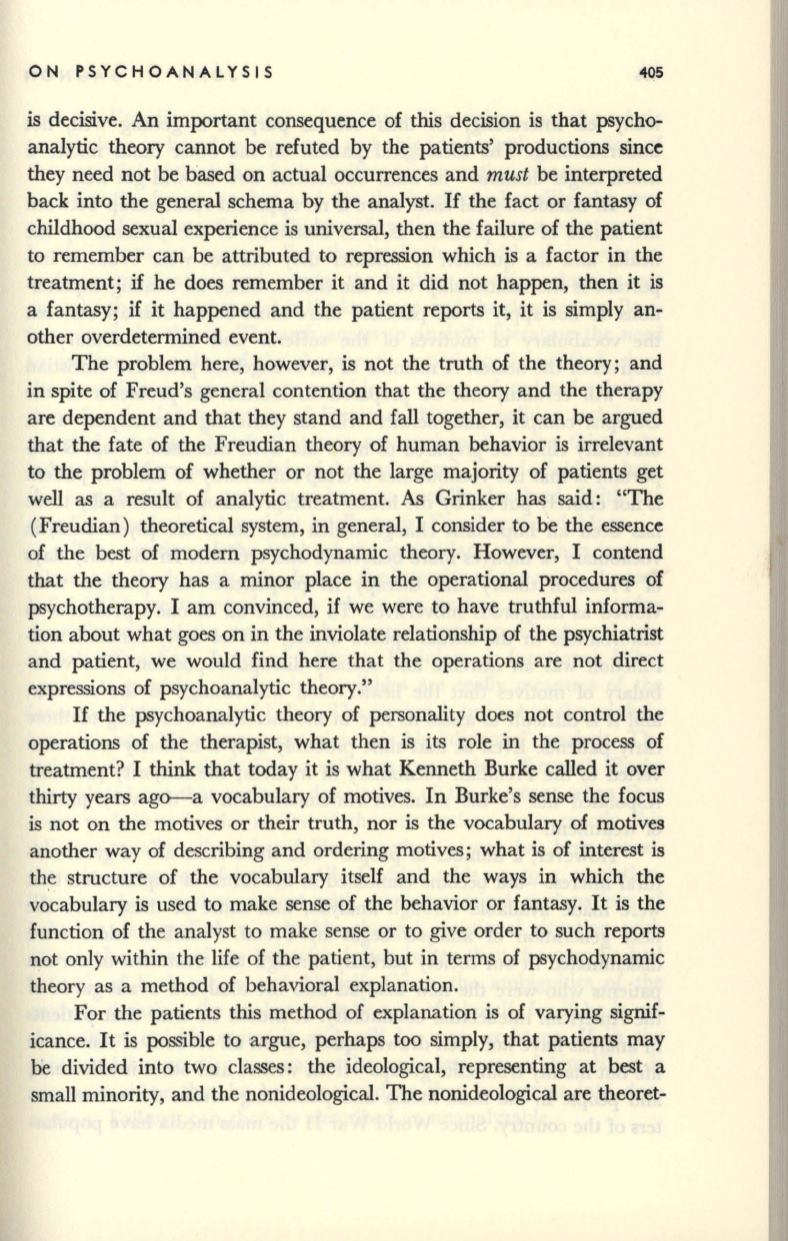
ON PSYCHOANALYSIS
405
is decisive. An important consequence of this decision is that psycho–
analytic theory cannot be refuted by the patients' productions since
they need not be based on actual occurrences and
must
be interpreted
back into the general schema by the analyst.
If
the fact or fantasy of
childhood sexual experience is universal, then the failure of the patient
to remember can be attributed to repression which is a factor in the
treatment;
if
he does remember it and it did not happen, then it is
a fantasy; if
it
happened and the patient reports it, it is simply an–
other overdetermined event.
The problem here, however, is not the truth of the theory; and
in spite of Freud's general contention that the theory and the therapy
are dependent and that they stand and fall together,
it
can be argued
that the fate of the Freudian theory of human behavior is irrelevant
to the problem of whether or not the large majority of patients get
well as a result of analytic treatment.
As
Grinker has said: "The
(Freudian) theoretical system, in general, I consider to
be
the essence
of the best of modern psychodynamic theory. However, I contend
that the theory has a minor place in the operational procedures of
psychotherapy. I am convinced, if we were to have truthful informa–
tion about what goes on in the inviolate relationship of the psychiatrist
and patient, we would find here that the operations are not direct
expressions of psychoanalytic theory."
If
the psychoanalytic theory of personality does not control the
operations of the therapist, what then is its role in the process of
treatment? I think that today it is what Kenneth Burke called it over
thirty years ago--a vocabulary of motives. In Burke's sense the focus
is not on the motives or their truth, nor is the vocabulary of motives
another way of describing and ordering motives; what is of interest is
the structure of the vocabulary itself and the ways in which the
vocabulary is used to make sense of the behavior or fantasy. It is the
function of the analyst to make sense or to give order to such reports
not only within the life of the patient, but in terms of psychodynamic
theory as a method of behavioral explanation.
For the patients this method of explanation is of varying signif–
icance. It is possible to argue, perhaps too simply, that patients may
be divided into two classes: the ideological, representing at best a
small minority, and the nonideological. The nonideological are theoret-


